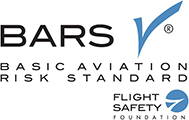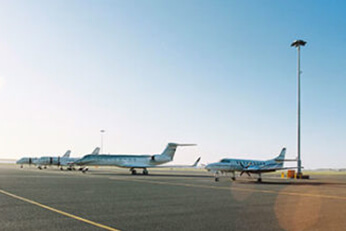Does your business use aircraft in the course of normal business such as charter flights or fly-in fly-out operations? Are you concerned about workplace health and safety implications associated with your workforce flying in aircraft?
If your answer to these questions is yes, you should be concerned about your obligations under Workplace Health and Safety Legislations. For example, sections 34 and 35 of Queensland’s Workplace Health and Safety Regulations 2011 cover the requirements to manage risk. Other States have similar requirements. Whilst in one part the Queensland Legislation specifically excludes aviation safety, it does not exclude a general obligation for businesses to identify hazards and manage risks. So as always with these things, the “devil is in the detail”. For aircraft operators, the minimum standards and requirements for what is essentially managing risk are prescribed under the Civil Aviation Act, regulations and orders.
Many business people believe that if an aviation operator is appropriately approved by the Civil Aviation Safety Authority (CASA), they must be safe. Statistically, this is a reasonable assumption; however, the Air Operator Certificate (AOC) granted by CASA only ensures that the operator met the minimum standard at time of issue. Also, most people do not understand that legislation is generally the minimum acceptable standard. Most of us prefer to think that the aircraft that we are travelling in exceeds minimum standards to provide us with further peace of mind.
From my experience, most non-aviation business people would not fully understand the authorisations of an AOC. It’s a piece of paper signed by someone, and that’s about it! Most large businesses that regularly use charter or FIFO will want a higher standard from aircraft operators who are contracted to provide the air services. They aim to prescribe aviation best practice into their air charter contracts which usually include things like Safety Management Systems (SMS) and satellite flight flowing, even though both are not required under the Civil Aviation Regulations for charter operations.
For consistency, transparency and to ensure that best practices are captured, many companies include these into an aviation policy or set of standards. This will enforce the convener or coordinator of the charter flight to exceed the minimum standards. If this is developed, it is then relatively straightforward to establish an audit program to ensure these standards are continually satisfied. The question you have to ask yourself is “why do they do this?” and the answer lies in the management of risk.
TechSafe Aviation can assist your business to establish your own standards based on your requirements. TechSafe also provides audit services to large and small businesses to assess risks. We will be happy to discuss the issues surrounding aviation risk management and what measures can be put in place to mitigate these risks.


